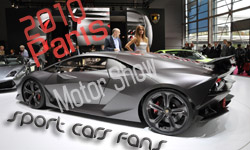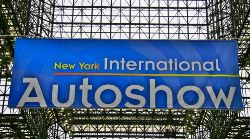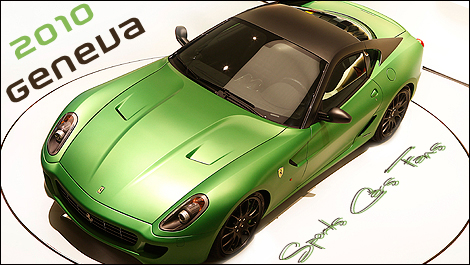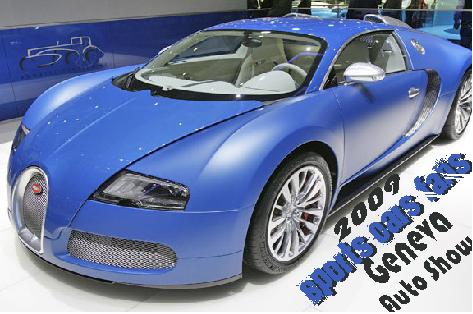The world's first 'green' supercar

Driving prototypes is practically useless. It's next to impossible to get a feel for what the production version is capable of, and you rarely get a chance to explore the limits. Our time with the Ronn Motor Company Scorpion didn't change that sentiment, but it did give us a glimpse into the upstart's future and how its program is progressing since the concept's introduction at last year's SEMA show. Tooling around Sacramento in the V6-powered, hydrogen-injected roadster, the unmuffled exhaust made us almost as uncomfortable as the lack of seatbelts. But to the company's credit, the Scorpion is a rarity in the show-car world – a concept that actually drives. So when the call came from Texas to get some wheel-time in the Scorpion, we jumped at the chance. Hell, Arnold Schwarzenegger personally invited the Ronn Motors crew to the Capitol to get a closer look... who are we to deny the chance to hold court with the Governator?
Now, before you step up to the commenting plate and knock a few softballs off the Scorpion's styling, understand that it's more attractive in person than in pictures, and it made the transition from the computer screen to a tube-framed, carbon fiber-bodied proof-of-concept runner in a scant 12 weeks. The low-slung front-end, swept-back headlamps, hood vents and bulbous fenders do their best supercar imitation, while the massive air-intakes aft of the front doors are large enough to swallow a 'tween. The rear track is reminiscent of a Diablo left in a microwave, and although we wouldn't call the overall shape "pretty," it does exude an air of '90s-era exuberance. Too bad things go awry in the rear, with a back end that's less J-Lo and more Eddie Murphy in a fat suit.

The environment inside is a different story, thanks to a steering wheel pilfered from the Acura parts bin and a shifter any Hondaphile would recognize instantly. The semi-slab seats are one-offs, along with the dash, massive center tunnel, door panels and carbon fiber gauge cluster that houses the Autometer-supplied tach, speedo, temp and fuel dials. On the inside of the left A-pillar is a small LED that glows blue when the hydrogen injection system kicks in, which is where the Scorpion differs from the slew of kit-car manufacturers trying to make their name in a sea of over-hyped, under-funded ambition.

Nestled within that bodacious badonkadonk is a twin-turbocharged, Acura-sourced 3.5-liter V6 mounted amidships. Depending on the spec, the Scorpion can be had in two flavors – 450 or 650 horsepower – each equipped with the company's proprietary H2GO hydrogen injection system.
The idea behind the setup is to produce enough hydrogen on board and inject it into the fuel stream to get the benefits of the gas (increased fuel economy, higher octane and reduced emissions) without having to top up at non-existent hydrogen refueling stations. Combined with the ultra-efficient V6, Ronn Motors claims a boost in mileage of around 20 to 30% and a substantial drop in C02 output. With only 2,200 pounds weighing the Scorpion down, the company estimates fuel mileage at around 40 miles-per-gallon.
One of the major hurdles to overcome when creating hydrogen in an automotive application is producing enough electricity to split the water molecules without drawing too much energy from the vehicle's electrical system, thus negating the positive effects. The Ronn Motors crew claims the stock alternator doesn't need to be modified, although the lack of interior amenities compared to the Acura TL drivetrain donor means there's more wattage available from the onset. According to Ronn Maxwell, the company's founder and namesake, "We're not trying to run this motor on pure hydrogen gas. It doesn't take much [hydrogen] to get the benefits."
Although Mr. Maxwell and his team are confident in the technology, they'll need more than engineering expertise to defeat the negative publicity surrounding similar systems. Do a search for "hydrogen injection" and you'll be bombarded with countless companies claiming a variety of benefits from their own devices. While some of these firms have been exposed as scams, preying on punch-drunk consumers bowled over by last summer's surge in gas prices, the jury is still out and Ronn Motors is bound and determined to prove its detractors wrong.
The company contends that their H2GO setup is a more holistic, total system approach that allows Ronn Motors to develop the injection system into the vehicle from the beginning. Without performing a battery of tests, we can't confirm or deny their claims, but we're hoping that when production begins this fall, we'll be afforded a follow-up test that allows more drive time, a chance to calculate overall fuel economy and maybe a stint on the dyno.
Tech briefing and green cred aside, we fired up the engine and the bent-six's siren song was barely muffled by the Turbonetics turbos. We engaged the stiff clutch, selected first on the weighty shifter, let up on the left pedal and got underway.
As suspected, this is still very much an early prototype, so the steering is lacking in on-center feel and it takes a considerable amount of muscle to tackle the first right-hand bend. A judicious dip of the throttle sends the tach spiraling to the right as all 450 hp is fed through a lightened flywheel down to a standard limited-slip differential. Just as the experience transitions from turbocharged torque to high-revving bliss, our fun is cut short by a 4,500-rpm rev limiter (it's an engineering mule after all, so expect something closer to 8k in production trim) and the wastegates fire off with enough gusto to give SRT4 owners bouts of blow-off valve envy.

After making our way through second and third gear, we engage the anchors, and although the pedal travels past the half-way point before the Wilwood calipers begin to clamp down onto four, 12-inch slotted discs, the feel is tight and controlled, if not entirely confidence-inspiring.
Visibility is somewhat compromised by the concept's slanted windshield and the back-up camera is a necessity when attempting to park. Although the ride-height has been increased from its show stand stance, the independent suspension, equipped with fully-adjustable coilovers, does little to cushion the blow from the 20x9-inch (front) and 20x11-inch (rear) wheels fitted with Toyo Proxies T1R rubber (sized 255/30 and 305/30, respectively). Expect more fiddling here before serial production begins.

After a few more passes and a handful of U-turns, we park the Scorpion to let things cool (a small, rear-mounted radiator is fitted for photo shoots, while a larger unit is equipped for testing) and quiz Ronn on what's due to change as the Scorpion evolves from prototype to production.
The exterior's shape will supposedly make the transition unscathed, although the interior will benefit from a complete redesign with a thinner center console and a few ergonomic tweaks. A five-speed automatic (also sourced from Acura) is under development, complete with revised gears ratios and paddle shifters, along with a retractable roof housed behind the seats and deployed Gallardo-style.
If you get the impression that Maxwell and the rest of the Ronn Motor crew have a lot of work ahead of them, you're right. The concept we drove is a solid first step, and judging by Ronn's resolve and the production partnership his company has forged with Southern California-based Metalcrafters – the same fabrication gurus responsible for building the concept as well as dozens of others for big-name automakers – we're far less skeptical about the Scorpion's future.















